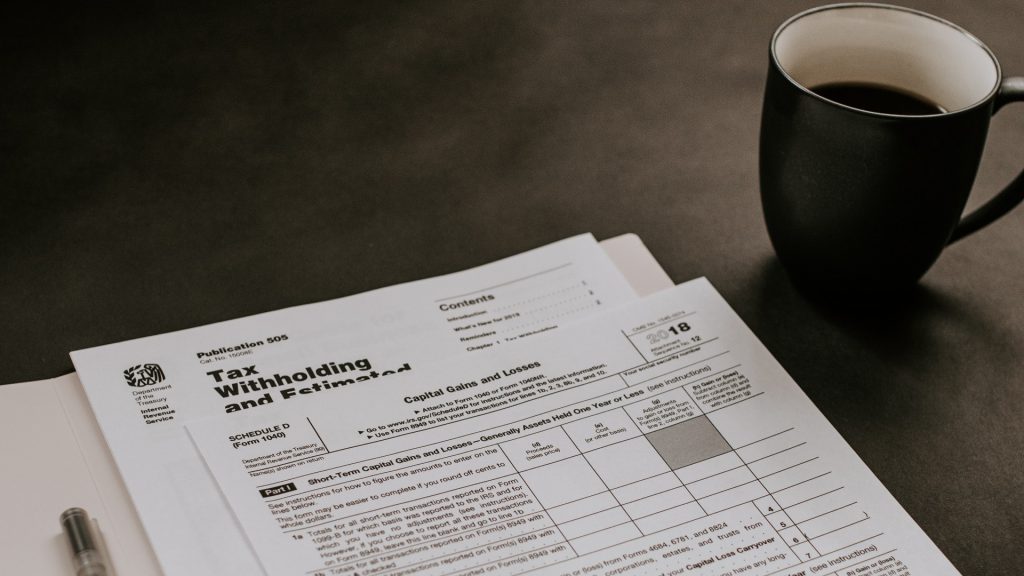Having a strategy to optimize our current resources is crucial to successful retirement outcomes. When it comes to choosing savings accounts, there are many options available, including 401(k), IRA, Roth accounts, and HSA. But how do you choose among them? Read more to find how. Review their key features and how to combine them to improve your retirement plan.
All information in this post is provided for illustrative and educational purposes only and should not be considered tax or investment advice, or a recommendation to buy or sell any type of securities.
There are a number of accounts designed to help you grow your retirement savings. Some are offered through your employer, and others you can open on your own. There are at least two versions for each type, giving you at least four options. Then you have Health Savings Accounts. Yes, a health account can be used for retirement purposes. If you are lucky, you may have a pension plan or a cash benefit plan. Making the best allocation decisions can have a big impact on the growth of your nest egg. Consider that your retirement horizon is long and it includes all your retirement years. So, how do we navigate through this maze and which type of account should we consider?
Your Employer’s 401(k) Plan
Let’s start with your employer retirement plan. This is the so called 401(k) plan, or 403(b) for non-profit employers. Why start from this plan? Contributing to the 401(k) is always a good idea because it is tax advantaged. You put money in the account before it gets taxed. This lowers your tax bill this year. After that, your money grows tax free. When you take the money out, the entire amount is taxed as ordinary income. The ability to defer taxes until after you retire helps you grow a larger nest egg.
Tax-Free Contributions ⟶ Taxable Withdrawals (tax deferral)
Max the match
In addition, many companies offer a “match” for part of the money you contribute to these accounts. A typical scheme is for the employer to match 50% of your contribution until you contribute 6% of your salary. That means the employer will contribute up to 3% of your salary. If you make $50,000 a year and contribute $3,000 (6%), your employer contributes $1,500, under this scheme. So your total contribution (employee + employer) will be 9%, or $4,500 in this example. Some companies may have a greater match, and others may contribute even if you don’t put anything in it.
Unless you have a particular situation and cannot afford it, contributing up the match amount is a no brainer. If you leave your company, you can take the money with you. You can keep the same account, roll the money over to your new employer’s 401(k) plan, or to an IRA, which we discuss below. The money your employer contributes may be yours or not. It depends on the so called vesting schedule. In some companies, employer contributions vest right away, so they are yours to keep. At other companies, vesting can occur over a number of years. Check your employer vesting schedule to find out. There is a 10% penalty (in addition to income taxes) for withdrawing your money before you reach the age of 59 and ½. So it’s never a good idea to simply cash out your 401(k) money.
Know your limits
For some people, saving in their 401(k) account is all they need. Estimate your monthly expenses in retirement (subject of a forthcoming blog), then use a calculator like this to figure out how much you need to save. There is a limit on how much of your salary you can contribute every year. For 2019, the limit is $19,000, plus an additional $6,000 if you are 50 years of age or older, called the catch-up contribution.
Health Savings Accounts
If your are enrolled in a high deductible health plan, you may be eligible to contribute to an HSA account. Why do I include the HSA as part of retirement savings? Because the tax advantage of the HSA can be better than any of the other retirement accounts. Contributions to HSA are tax exempt. Like 401(k) contributions, they help you reduce taxable income. But there is more. While you pay Social Security and Medicare taxes on your 401(k) contributions, HSA contributions are exempt from those, so the tax advantage is greater for HSA contributions.
Tax free contributions and distributions?
What happens when you retire? You can withdraw from your HSA savings tax-free to pay for approved health care expenses, including Medicare part B, supplemental health, and long term insurance premiums. Health care expenses can be relatively large in retirement, so having a tax-free source to draw from is great. If not used for health care, your withdrawals are taxed as ordinary income.
For households with enough income and saving capacity, contributing the maximum amount to an HSA plan is generally good practice. Increasing your HSA contribution is also a good year-end tax planning tip to lower your taxable income. Access to an HSA plan is a good reason to choose a high deductible plan over other options with lower deductibles. Plus, many companies contribute to employee HSA accounts. The key in these accounts is to have your HSA savings invested, so check the investment options of your provider.
Traditional Individual Retirement Account (IRA)
If you don’t have a 401(k) account or an HSA, you still have options to help you save for retirement. The IRA is one such option. Everyone with earned income can contribute to a traditional IRA. So you can start contributing to an IRA when you are a student and working half time. It’s never too early to start thinking about retirement. If you don’t have earned income but your spouse does and you are filing jointly, you can contribute to a spousal IRA.
Your contributions are fully tax deductible if you and your spouse are not active participants in a qualified plan, like the 401(k). If you are an active participant and income is below certain thresholds, you may be able to deduct part of your contribution. When you retire, any withdrawals above your after-tax contributions are taxed as ordinary income. If you only made tax deductible contributions, your entire withdrawal amount is taxed. There is a penalty of 10% for early withdrawals (before 59 and ½ of age) from IRA accounts. The penalty can be waived in some cases (to pay for certain education expenses, first time home purchase, some medical expenses, and other cases).
You can contribute up to the smaller of either the earned income, or the annual contribution limit, which is $6,000 for 2019 and 2020, with an additional $1,000 for people who are 50 years or older.
Roth Versions
There are Roth counterparts to the traditional 401(k) and the traditional IRA. In a Roth account (from the last name of the guy who came up with these accounts) the taxation works differently. Your contributions to a Roth are part of your taxable income. Once you are taxed on the contributions, you are done. You don’t have to pay taxes again on anything you withdraw from the account in retirement.
Taxable Contributions ⟶ Tax-Free Withdrawals in Retirement
Roth 401(k) are newer and not all companies offer them. So you need to check with your company if your plan offers these accounts. Whether you can contribute to a Roth IRA depends on your income. For married filing jointly, the threshold is $193,000 for the maximum allowed contribution. The allowed contribution is then phased out between $193,000 and $203,000.
Any money you contribute directly to a Roth IRA can be taken out without any taxes or penalties. So if you need that money for a wedding or a new bike, you can withdraw it, in principle. Not suggesting you do that, but you could. The point is that the Roth IRA can act as an emergency fund. Penalties and taxes apply to the gains (with some exceptions as we saw for the IRA).
Annual Limits
The same annual limits that apply to traditional 401(k) and IRA apply to the Roth counterparts. In addition, the limits apply to the sum of the contributions across the traditional and Roth account. For example, the $19,000 401(k) limit applies to the sum of the amounts contributed to a traditional 401(k) and Roth 401(k). Similarly for the $6,000 IRA limit.
What’s Better Roth or Traditional?
The main difference is in when you are taxed: Now vs. later. So as a starting point, if your income tax bracket is low, you should contribute to a Roth type of account. Younger workers with steep income trajectories are likely candidates for Roth contributions to their 401(k) and/or IRA. Chances are that by the time they retire, their income brackets are higher than today’s. As your income rises, you may need tax deferred contributions to lower your current tax rate. Contributing to a tax deferred account is a good idea. You have both the HSA and the 401(k) for this purpose.
If you are a high earner, you may need additional savings for retirement. Exhaust your HSA capacity, then look to both the traditional and Roth IRAs. Having your nest egg spread across Roth and traditional accounts has benefits in retirement. For example, while traditional IRA withdrawals are considered taxable income and can affect the taxability of your Social Security benefit, Roth withdrawals do not. If you can’t contribute to a Roth IRA because your income is too high, you can contribute to a traditional IRA and then ‘convert’ that contribution to Roth by rolling it over to a Roth account (a so called Roth conversion). You may have to pay income tax on your conversion (if the contribution was deductible), but will benefit from having the Roth in retirement. If you have a variable income, make Roth contributions or conversions in years when your income is lower.
The Bottom Line
The bottom line is that while it is great to have options, planning your savings across multiple accounts is not simple. Here are the general principles we reviewed:
- Start contributing to a (Roth) IRA early if you can.
- Don’t leave money on the table. Contribute up to the maximum employer match.
- Consider the HSA as a retirement savings vehicle. HSA accounts can be better than Roth (tax-free in and tax free out).
- Consider your tax bracket and the benefit of diversification across accounts when determining Roth vs. traditional contributions.
If you are a DIYer, do your homework on each of these options, and consider how they fit within your comprehensive financial plan. For most people that need to look outside of their company’s 401(k) for their retirement needs, the difference between making optimal choices and suboptimal ones can be big. Remember our $10 a day calculation? If you find this complicated, I suggest you talk to a trusted fee-only financial planner. Your nest egg and your retired self with thank you.
Until next time!
Massi De Santis is an Austin, TX fee-only financial planner. DESMO Wealth Advisors, LLC provides objective financial planning and investment management to help clients organize, grow and protect their resources throughout their lives. As a fee-only, fiduciary, and independent financial advisor, Massi De Santis is never paid a commission of any kind, and has a legal obligation to provide unbiased and trustworthy financial advice.


